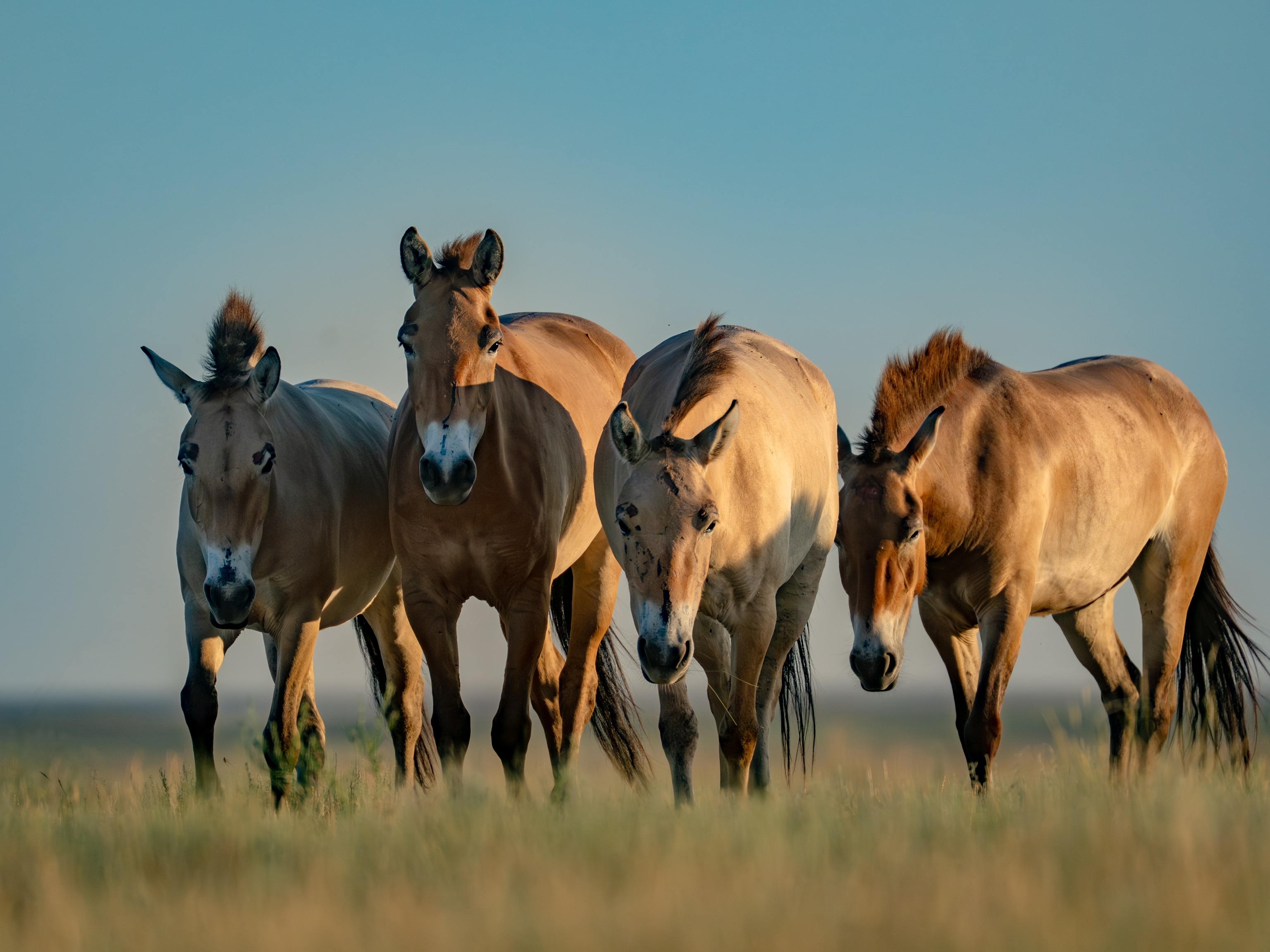Tiny Real-Life Horse of Greek Myth Headed for Extinction
Skyros ponies, thought to have pulled Achilles' legendary chariot, have declined to about 200 animals left on Earth.
The breed that may have pulled Achilles’ legendary chariot is in danger of becoming resigned to the history books itself.
The semi-wild Skyrian horse, or Skyros pony, has lived on the Greek island of Skyros for 2,000 years.
But due to overgrazing of sheep, disappearing habitat, and interbreeding with donkeys, the horse has declined to only about 200 individuals left on Earth, most of which live on Skyros, according to the Skyros Island Horse Trust, a nonprofit on the island.
Saving the horse is “very difficult within Greece’s economic situation,” says Amanda Simpson, who runs the trust.
"Even though it’s a rare breed and there’s status, there [are] no kinds of funding in terms of government resources." (Read "Strapped for Cash, Some Greeks Turn to Ancient Source of Wealth.")
Simpson, originally from England, founded the trust in 2005 after visiting Skyros and seeing that the horses needed help. The trust promotes awareness of the horse, monitors the wild population, and sometimes takes in ponies that are sick or injured. They also breed horses and use them for education.
For instance, the small, friendly animal is perfect for equine-assisted therapy and teaching children to horseback ride. (Watch "Inside the Famous Chincoteague Island Pony Swim.")
'Living Museums'
Another compelling reason to protect this animal is because of its role in Greek mythology, Simpson says. In addition to transporting Achilles, the Skyros may well be the small horses featured on a frieze in the Parthenon in Athens (see a video of the temple's frieze.)
“These are sort of living museums,” says Simpson. “You actually have a living breathing piece of history. It would seem criminal to see them go into extinction.”
Scientists believe the Skyros pony descends from horses brought to Greece in the fifth century B.C. Though they were once found throughout the isles, eventually they became limited to Skyros, where the animals grew small and evolved adaptations to island life. (Read intriguing new science that says horses have consciousness.)
A typical Skyrian horse is one solid color, usually black, brown, gray, or bay, and has a thick, plush mane. It has similar proportions to a full-size horse, with small, strong hooves. They stand about 10 hands tall, or 3.5 feet at the shoulder, officially classifying them as a pony.
Averting a Greek Tragedy
Conservation in Mediterranean countries "requires a lot more finesse in politics,” says John Halley, an associate professor of conservation at the University of Ioannina in Greece.
“Some of the politicians are actually conservation biologists,” he adds. “But like any other country, there are so many other problems that need attention, that maybe the case of the Skyros pony is not being heard.”
To keep the breed alive, the Skyros Island Horse Trust is using a multifaceted approach, such as keeping track of bloodlines to ensure that each new generation is diverse, finding homes for horses on the island's farms, and keeping some animals that are sick or old.
"In some ways, welfare for the horses is looking up, because we have a vet on the island now," says Simpson. "The horses are loving and have a great deal of personality."
Follow Kristin Hugo on Tumblr.




